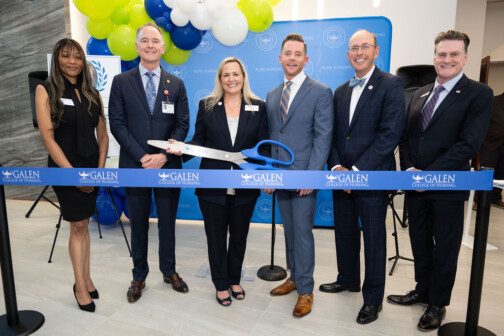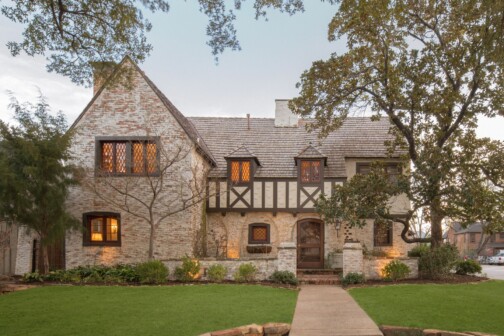
I am about to tell you something you already know and have experienced. These days, airports are really shopping super malls with airplanes. This phenomena has been around for a decade or so now, but is really flourishing in the current travel environment. (The Sky Mall magazine, wonderful as it is, is not what is being discussed here)
The connection between retailing and air travel has been around for decades. It began with the sales of trinkets and t-shirts along with (usually) bad coffee, some duty-free products for international passengers, newsstands, a few bookstores, and warmed-over food. Not exactly a positive experience. If you go back far enough, airlines used to provide in-flight meals in all classes of service. We fliers at that time often made jokes about the lasagna.
If you remember, the volume of travelers was quite high in the late 1990s. Travel was in many ways much simpler. The retail, entertainment, and restaurant items presented in airports to travelers at that time seems somewhat primitive in contrast to what is being offered at so many airports today. Security around airports was “light” by comparison. Travel volume diminished in the early years of this century. One reason was a certain softness in the economy due to the dot-com bust. The other major driver of the air travel downturn, of course, was 9/11.
Just prior to and especially after Sept.11, 2001, the flying world and experience changed in many dramatic ways. President Bush asked all of us Americans to “Shop for Freedom,” and we did. The transformation from just being an airport to becoming a shopping mecca with airplanes began in earnest. However, the transition after 9/11 involved multiple bag screenings and grim-faced men and women carrying weapons that were frightening and comforting at the same time. We are all more careful; the monitoring is taking different forms and utilizing elaborate technologies, but the security, while not perfect, is improved and much less threatening.
Today, it is estimated that there are 600 million fliers traveling domestically. You can probably multiply that by a factor of 2 to include international and other nation’s domestic flying populace. This is a big potential market. Airport shopping takes place around the world with enthusiasm.
At a major airport near you, there are thousands of bored/frustrated/indignant/ energized/weary/frazzled (I could go on) travelers (prisoners in some ways) stuck behind security for several hours until their plane leaves. What retailer does not like a truly “captive audience? And the traveling crowds are in attendance every day. At a time when suburban shopping malls are going dark or making friends with a bulldozer due to a still soft economy, airports are opening stores and transforming the spaces between and across from their gates into revenue-generating square footage with bright lights, sparkly objects, and very interesting food!
As we all know, there has been a great change in the airline industry with all of the bankruptcies, consolidations, and increased fees for baggage, better seats, and early boarding to name a few. The airports are interested in retail and restaurants as a way to create operating revenues that are not entirely dependent on airlines. The airlines endorse the idea that some of the airport cost burden should be shifted from them to other revenue-generating enterprises.
Statistics indicate that airlines at major hubs provide more than 40 percent of airport’s operating revenue. The big surprise is that retail and restaurant are the second-largest revenue source at nearly 20 percent. Rental car fees, parking and miscellaneous revenues contribute the remainder.
In general, rents at airports are higher these days than at those beleaguered shopping malls we all visit (or not) when we are not flying. At the same time, retail space vacancy rates at airports are lower when compared to malls. We all know of a time when the products to be bought or consumed in the airport were priced higher than outside the airport. Today it seems like there is one price for merchandise in the mall and the same price in the airport.
Traveling does seem to place many people in the mindset to “spend money.” This has become a multibillion-dollar (over $35 billion annually) business! It is difficult for airport executives to not embrace this source of additional revenue.
It used to be, several decades ago, that any space for retail and restaurant sales was added to the airport layout after the functional relationships between gates, ticketing areas, baggage carrousels, restrooms, modest security facilities, etc. were resolved. New airport designs or existing airports that are being renovated or expanded already consider and build in the space necessary for retail as part of the initial design scheme. Retail is beginning to be allowed to “sit up front.”
Think about having to take a trip and basing your decision on a number of factors, one of which is the airline “hub” that you will be flying through. Sounds farfetched? If you wanted to fly from DFW (or Love) to see Aunt Bess or visit a business associate in Rochester, New York, there are multiple flights all involving one stop on American Airlines, Delta Airlines, or United Airlines. (Southwest will get you there for the same price, but you probably have to stop twice.) Where you are going to stop and (possibly) change planes becomes an additional factor.
Sound crazy? Not to those elite or regular frequent fliers that make regular and frequent trips to particular locations and have come to enjoy a specific hub’s dimly lit bar, local craft brew, and pot roast sandwich. If price and times are relatively equal, and you are an elite flier or just want to have a peaceful experience, convenience and amenities are a big deal. People sometimes plan their trips based on their shopping lists and what airport can satisfy their needs.
Today’s airports have concourses like successful shopping malls that are easily navigated, have good signage, and great ambiance. Many of these major airport hubs have phone apps that provide the traveler with maps showing where stores and restaurants are and the quickest way to get from one point to another. This airport’s physical amenities include natural light, high ceilings, appropriate spatial volumes, bright lighting for evening hours, comfortable furnishings and fixtures, interesting design elements, artwork, and all types of needed people movers (elevators, escalators, moving sidewalks and plain old smooth-floored walkways). The retail and restaurant environments working with the airport facilities attempt to add some glitz and glamour to the travel experience.
In North Texas, we are fortunate to have Terminal D at DFW International as a prototype. Terminal D has been identified by industry observers as one of the best terminals in the country. We people of the flying public can also see what other ideas DFW has when we experience the new renovations that have taken place in the first phase of Terminal A. Not to take a back seat, the new gates at Love Field also qualify as serious contenders for the wow factor.
Have you seen the shopping and restaurants that is located in these terminals? First rate! At both of our community’s main airports, we and our traveling companions get to experience many of the best examples of our local culture, cuisine, beverages, crafts, and people. It is much the same in other major cities and around the world.
The stores themselves are usually smaller than their counterparts at a traditional mall. They are brightly lit, very inviting, and very open to the concourse allowing travelers/shoppers to pass one another while dragging several suitcases and sometimes a cranky child or husband. The store’s merchandise is often moved forward for easy viewing from the concourse. Most of the time the merchandise at the storefront is colorful and engaging while being attractively displayed. Store staffs are generally pleasant and welcoming.
In most cases, the merchandise sold at the airport stores is small (no washing machines or televisions) and easy to immediately consume or pack. In addition to the more traditional stores and restaurants, the retail mix can also include kiosks (a very fast-growing category) allowing merchants to try to experiment with their merchandise sales approach. These kiosks allow both mature retailers and start-ups to try to sell their wares at the airport. The airport’s stores, digital, and other types of kiosks often allow goods and products bought to be shipped to the customer’s destination or home.
This is by no means the signal of death for the shopping mall, the strip center, neighborhood shopping and restaurants, or the downtown retail and restaurant environment. We are not going to abandon those things, and airport shopping will not replace these things. You cannot replicate the shopping experience on the Internet. But here is another venue for shopping and consuming at the airport. We have all seen this. It is a healthy and mature retail environment (most of the time) that we travelers experience in our airports.
Once we are through security, there are wonderful amenities, substances, and diversions that await us. This is a win for us, our communities, and our fellow travelers.
Bruce M. Carlson is founder, principal, and CEO of CMA. Contact him at [email protected].





